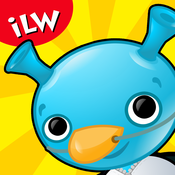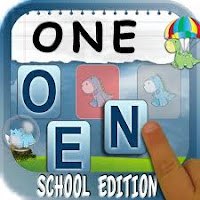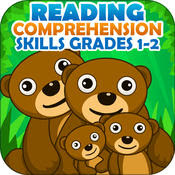1st Grade Apps that Cover Miscellaneous Reading/Writing Standards:
Apps & Online Tools by 1st Grade Standard:
1.1 Reading/Beginning Reading Skills/Print Awareness.
Students understand how English is written and printed.
$3.99
$1.99
$0.99
$1.99
FREE/$6.99
FREE/$1.99
FREE
$2.99
$14.99
$0.99
FREE
$4.99
1.2 Reading/Beginning Reading Skills/Phonological Awareness
Students display
phonological awareness.
$3.99
$3.99
$3.99
$3.99
$3.99
$3.99
$2.99
$3.99
$3.99
$3.99
$2.99
$2.99
$2.99
$1.99
$5.99
$5.99
$5.99
$2.99
$2.99
$4.99
$0.99
FREE/$2.99
FREE/$3.99
Online Games:
1.3 Reading/Beginning Reading Skills/Phonics
Students use the relationships between letters and sounds,
spelling patterns, and morphological analysis to decode written English.
Students will continue to apply earlier standards with greater depth in
increasingly more complex texts.
$2.99
$2.99
$6.99
$4.99
$1.99
$3.99
$2.99
$5.99
FREE
FREE
$15.99
$2.99
$1.99
$1.99
$1.99
$1.99
$1.99
FREE
FREE
$2.99
$7.99
$2.99
Online Games:
1.4 Reading/Beginning Reading/Strategies.
Students comprehend a variety of texts drawing on useful
strategies as needed.
$3.99
FREE/$3.99
$3.99
$1.99
$1.99
$1.99
$1.99
1.5 Reading/Fluency.
Students read
grade-level text with fluency and comprehension. Students are expected to read
aloud grade-level appropriate text with fluency (rate, accuracy, expression,
appropriate phrasing) and comprehension.
$2.99
$1.99
FREE
FREE
$3.99
FREE
$4.99
1.6 Reading/Vocabulary Development.
Students understand new vocabulary and use it when reading and writing.
Abby Explorer Grammar – First Level
Grammar Wonderland (Primary)
Compound Word Puzzles
Pocket Charts! Compound Words
Build Compound Words
Make a Compound Word Lite
Smart Fish: Magic Matrix HD
First Grade Antonyms
Online Games:
1.7 Reading/Comprehension of Literary Text/Theme and Genre.
Students analyze, make inferences and draw conclusions
about theme and genre in different cultural, historical, and contemporary
contexts and provide evidence from the text to support their understanding.
·
Sago Mini Fairy Tales
·
iReading HD – Classic Fairy Tales Collection
·
Animated Aesop Fables
1.8 Reading/Comprehension of Literary Text/Poetry.
Students understand, make inferences and draw conclusions about
the structure and elements of poetry and provide evidence from text to support
their understanding. Students are expected to respond to and use rhythm, rhyme,
and alliteration in poetry.
·
ABC Phonics Rhyming Word
·
ABC Phonics Rhyming Bee
·
Rhyming – A Montessori Pre-Language Exercise
·
Alliterations A to Z
1.9 Reading/Comprehension of Literary Text/Fiction.
Students understand, make inferences and draw conclusions about
the structure and elements of fiction and provide evidence from text to support
their understanding.
·
Puppet Pals
·
Toontastic Jr.
·
StoryKit
·
Felt Board
1.10 Reading/Comprehension of Literary Text/Literary Nonfiction.
Students understand, make inferences and draw
conclusions about the varied structural patterns and features of literary
nonfiction and respond by providing evidence from text to support their
understanding. Students are expected to determine whether a story is true or a
fantasy and explain why.
·
Reading Comprehension – first, second grade
non-fiction
·
Reading Comprehension: Animals, Grades K-1
·
PebbleGo.com by Capstone
·
National Geographic Kids
·
Look & Learn: Animals Vol. 1
·
NonFiction Reading for Kindergarten and
First Grade
1.11 Reading/Comprehension of Literary Text/Sensory Language.
Students understand, make inferences and draw
conclusions about how an author's sensory language creates imagery in literary
text and provide evidence from text to support their understanding. Students
are expected to recognize sensory details in literary text.
·
Inference Ace
·
Understanding Inferences Fun Deck
·
If --- Then --- Fun Deck
1.12 Reading/Comprehension of Text/Independent Reading.
Students read independently for sustained periods of
time and produce evidence of their reading. Students are expected to read
independently for a sustained period of time.
·
Storia
·
Books on Wheels
·
Epic
·
Tumblebooks.com
1.13 Reading/Comprehension of Informational Text/Culture and History.
Students analyze, make inferences and
draw conclusions about the author's purpose in cultural, historical, and
contemporary contexts and provide evidence from the text to support their
understanding. Students are expected to identify the topic and explain the
author's purpose in writing about the text.
·
Inference Ace
·
Understanding Inferences Fun Deck
·
If --- Then --- Fun Deck
·
One Globe Kids: children’s stories from
around the world
1.14 Reading/Comprehension of Informational Text/Expository Text.
Students analyze, make inferences and draw
conclusions about expository text and provide evidence from text to support
their understanding.
·
Main Idea – Sentences
·
Main Idea by Keith Gardner
·
Sequencing Tasks – Life Skills
·
Hearbuilder Sequencing
·
Sequencing Post Office
·
ShowMe
·
Educreations
1.15 Reading/Comprehension of Informational Text/Procedural Texts.
Students understand how to glean and use
information in procedural texts and documents.
·
Following Directions from I Can Do Apps
·
Fun Deck Following Directions
·
Hearbuilder Following Directions
·
Fun with Directions HD
·
SnapGuide
1.16 Reading/Media Literacy.
Students
use comprehension skills to analyze how words, images, graphics, and sounds
work together in various forms to impact meaning. Students continue to apply
earlier standards with greater depth in increasingly more complex texts.
·
Professor Garfield Forms of Media
1.17 Writing/Writing Process.
Students
use elements of the writing process (planning, drafting, revising, editing, and
publishing) to compose text.
·
Write about This
·
PhotoCard
·
Popplet
·
ShowMe
·
Educreations
1.18 Writing/Literary Texts.
Students
write literary texts to express their ideas and feelings about real or imagined
people, events, and ideas.
·
Puppet Pals
·
Toontastic Jr.
·
StoryKit
·
Felt Board
·
Write About This
1.19 Writing/Expository and Procedural Texts.
Students write expository and procedural or work-related
texts to communicate ideas and information to specific audiences for specific
purposes.
·
Write About This
·
PhotoCard
·
SnapGuide
·
Shadow Puppet Edu
1.20 Oral and Written Conventions/Conventions.
Students understand the function of and use the
conventions of academic language when speaking and writing. Students continue
to apply earlier standards with greater complexity.
·
Grammar Quiz Free
·
Vocabulary and Grammar!
·
Alphabet Vocabulary book for Kids
·
Abby Explorer Grammar – First Level
·
Grammar Wonderland (Primary)
·
JumpStart Blast-Off: Early Reading
1.21 Oral and Written Conventions/Handwriting, Capitalization, and Punctuation.
Students write
legibly and use appropriate capitalization and punctuation conventions in their
compositions.
·
iTrace
·
Little Writer
·
iWriteWords
·
LetterSchool
·
Sentence Builder
·
Jumbled Sentences 1
·
I Can Write 1
1.22 Oral and Written Conventions/Spelling.
Students spell correctly.
·
Spelling Ninja
·
SpellingCity
·
Spell Mania
·
Chicktionary
·
Hooked on Words
·
Alphabet Spelling and Phonics!
·
Word Wizard
1.23 Research/Research Plan.
Students
ask open-ended research questions and develop a plan for answering them.
·
Popplet
·
Write About This
·
PebbleGo.com by Capstone
1.24 Research/Gathering Sources.
Students determine, locate, and explore the full range of relevant sources
addressing a research question and systematically record the information they
gather.
·
PebbleGo.com by Capstone
·
National Geographic Kids
·
Kids Picture Dictionary
·
Write About This
1.25 Research/Synthesizing Information.
Students clarify research questions and evaluate and synthesize collected
information. Students (with adult assistance) are expected to revise the topic
as a result of answers to initial research questions.
·
PebbleGo.com by Capstone
·
Write About This
1.26 Research/Organizing and Presenting Ideas.
Students organize and present their ideas and information according to
the purpose of the research and their audience. Students (with adult
assistance) are expected to create a visual display or dramatization to convey
the results of the research.
·
ShowMe
·
Educreations
·
Shadow Puppet Edu
·
Videolicous
·
iMovie
·
ChatterPix Kids
·
Tellagami
·
Sock Puppets
1.28 Listening and Speaking/Speaking.
Students speak clearly and to the point, using the conventions of language. Students
continue to apply earlier standards with greater complexity. Students are
expected to share information and ideas about the topic under discussion,
speaking clearly at an appropriate pace, using the conventions of language.
·
ShowMe
·
Educreations
·
Shadow Puppet Edu
·
Videolicous
·
iMovie
·
ChatterPix Kids
·
Tellagami
·
Sock Puppets
·
Audio Memos
Heather Watson
Watson Works, LLC










































































































No comments:
Post a Comment